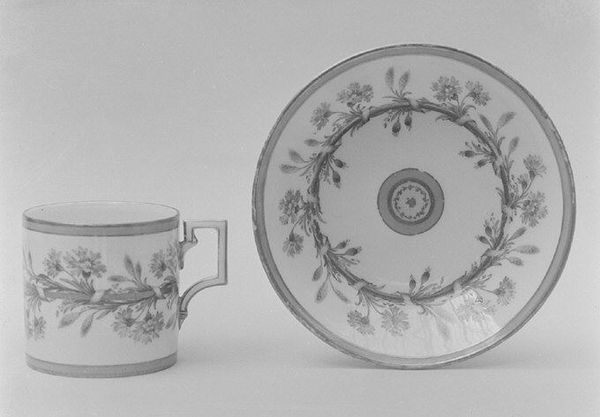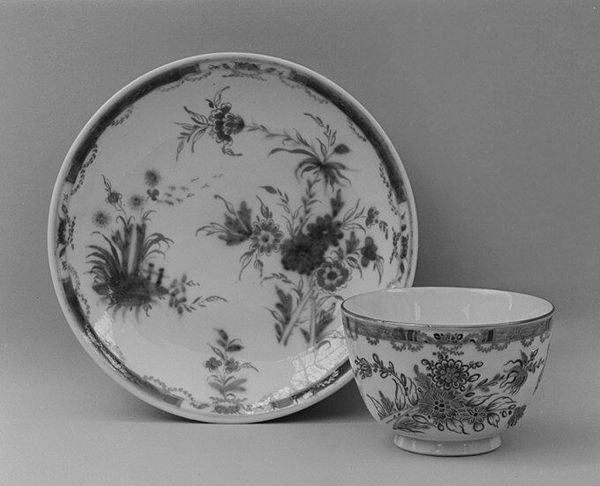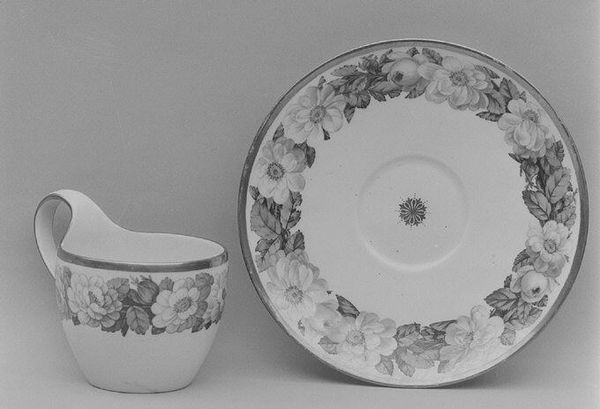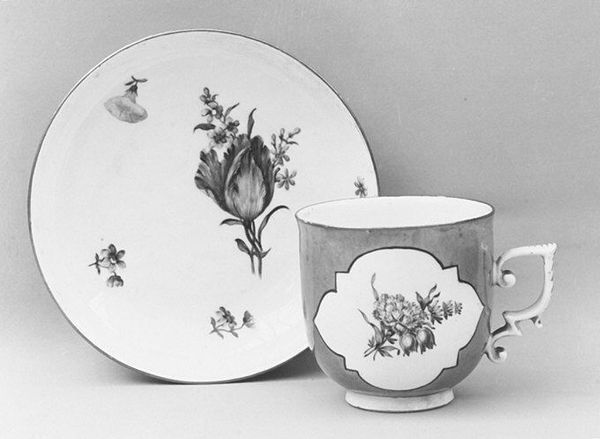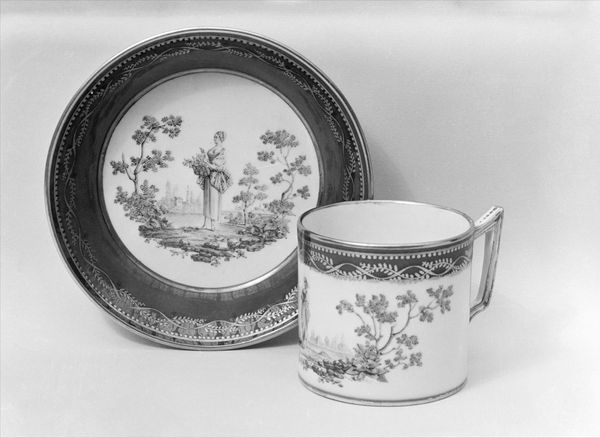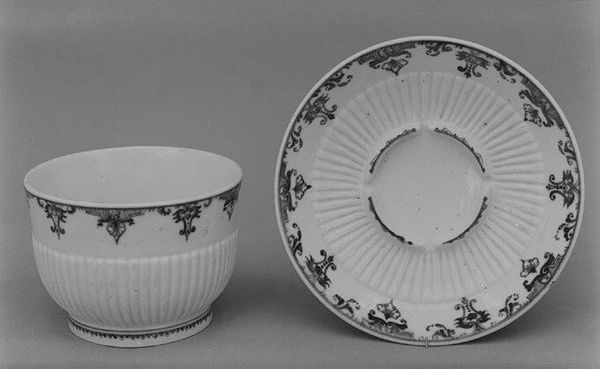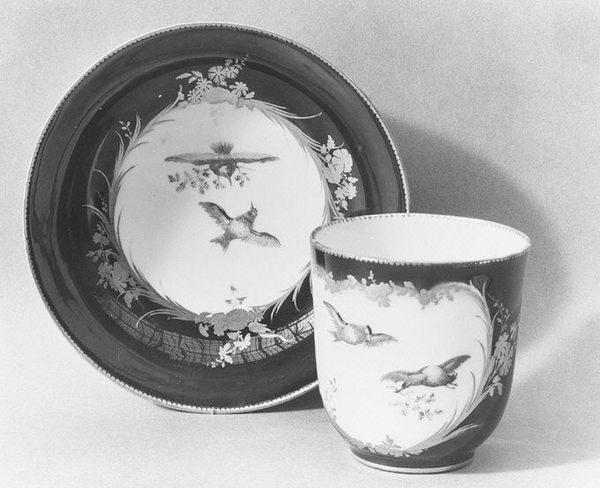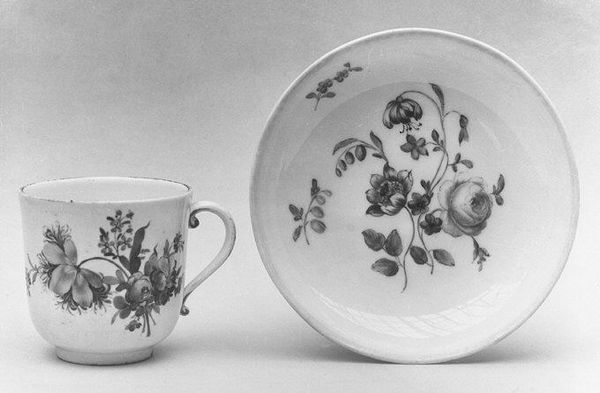
ceramic, porcelain, sculpture
#
ceramic
#
flower
#
porcelain
#
sculpture
#
decorative-art
Dimensions: Height (cup .366a): 2 3/4 in. (7 cm); Diameter (saucer .366b): 5 in. (12.7 cm)
Copyright: Public Domain
Curator: Welcome. Here we have a "Cup and Saucer," crafted sometime between 1750 and 1799 by the Doccia Porcelain Manufactory. It resides here at the Metropolitan Museum of Art. It's a delicate example of decorative art rendered in porcelain and ceramic. Editor: It’s immediately striking how simple yet refined the piece feels, even in this monochrome image. The floral design has this really clean, almost playful rhythm to it, making it feel very approachable despite its age. Curator: The Manufactory thrived during a period of rising European fascination with porcelain. These objects weren't simply functional; they served as status symbols, demonstrating taste and wealth. Consumption habits also played a big role, of course. Tea and coffee needed specialized receptacles, so the demand supported industry and innovation. Editor: Right, so thinking about the cultural implications – tea was becoming so ingrained in social rituals. Objects like these were essentially props in a performance, markers of a specific class identity, reinforcing gender roles for women, leisure, refinement, and often colonial power structures due to the origin of tea leaves. Curator: Precisely. We can see that in the careful craftsmanship. The balance of negative space and floral decoration indicates an elevated aesthetic sensibility. This cup and saucer probably weren't just sitting in a cupboard. Editor: I find myself wanting to trace the floral pattern and its movement across both surfaces, it’s like an early iteration of branding that silently narrates its own privileged existence. Curator: A well-made point! While its utilitarian purpose might be obvious, we can extrapolate volumes about sociopolitical structure simply by interpreting something as everyday as a teacup. Editor: Analyzing the flower's stylistic components could potentially speak to colonial trade routes, class-based accessibility to different design inspirations. These types of commodities impacted socio-economic situations, not just at the top, but all the way through communities of potters, traders and consumers. Curator: Absolutely, these pieces, in effect, offer a glimpse into the economic forces that molded early modern Europe. Thanks for making me look at something quite ordinary in a brand-new light. Editor: Likewise! It’s a useful reminder of just how powerfully mundane things echo across the boundaries of economics, labor, race, and gender.
Comments
No comments
Be the first to comment and join the conversation on the ultimate creative platform.

